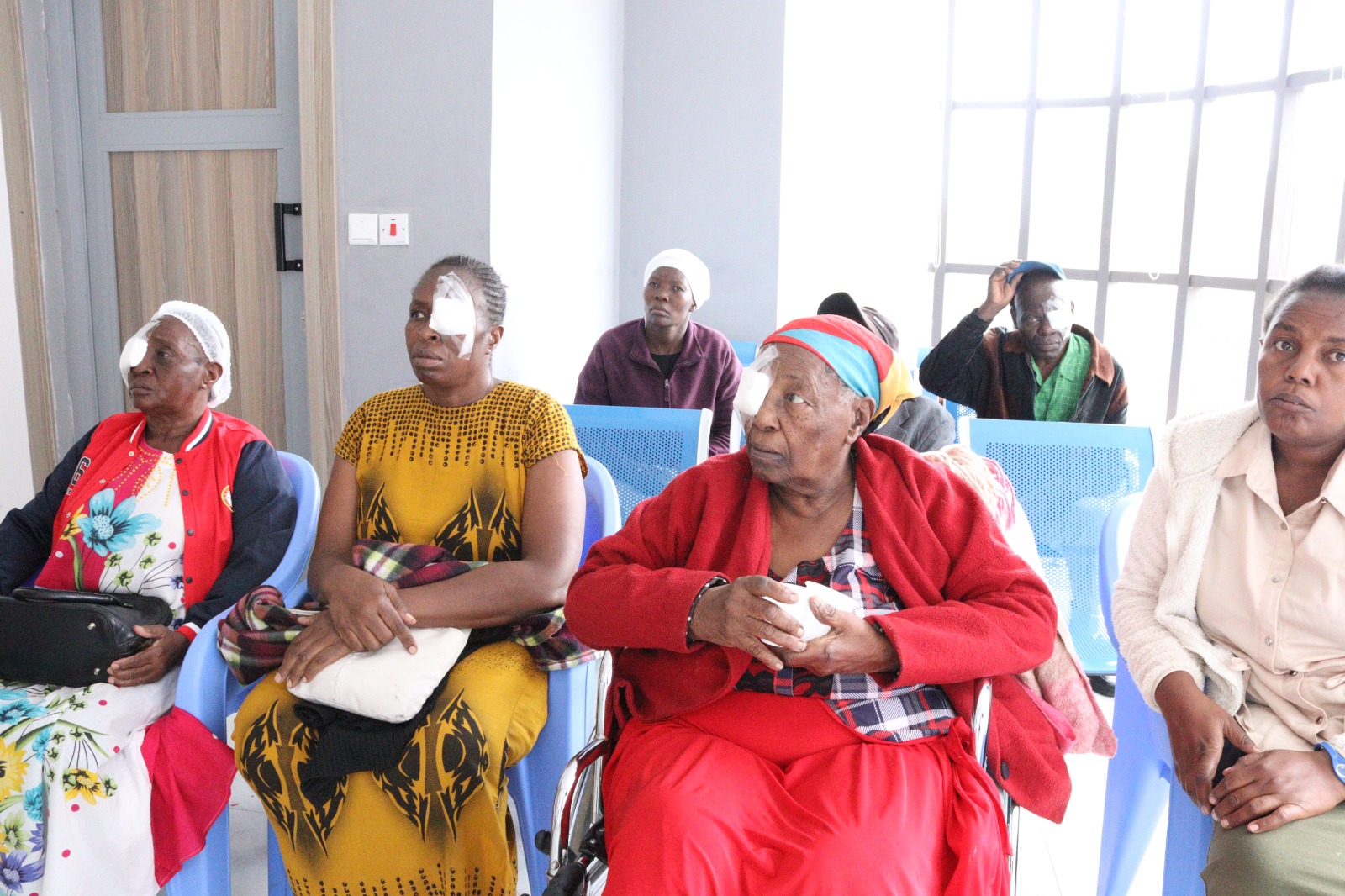By Tony Wafula
When vision begins to fade, life changes in profound and sometimes frightening ways. Faces become unrecognisable, movement grows uncertain, and daily routines that once felt simple turn into ongoing struggles.
For 26 residents of Nairobi’s informal settlements, this was their lived reality, until a targeted eye-care intervention brought light back into their lives. The beneficiaries, drawn from communities including Kariobangi, Dandora, Kayole, Mathare and Umoja, underwent cataract surgery at the Royal Eye and Ear Hospital.
The procedures were sponsored by Good Vision, giving many patients renewed hope after years of deteriorating eyesight. Cataract, a condition in which the eye’s natural lens becomes cloudy, is one of the leading causes of avoidable blindness globally. The cloudiness prevents light from passing through efficiently, resulting in blurred or dim vision.

Although ageing is the most common cause, cataracts may also develop due to diabetes, eye injuries, prolonged steroid use, UV exposure, smoking, poor nutrition or hereditary factors. In low-income communities, these risks often go unchecked due to delayed diagnosis, limited access to specialists or lack of awareness. Early detection remains critical in preventing severe vision loss. Eye specialists warn that blurry or foggy vision, difficulty seeing at night, sensitivity to light, faded colours, frequent changes in spectacles and double vision are among the earliest signs.
When left untreated, cataracts not only restrict sight but also affect mobility, independence, mental health and economic stability. Many patients become dependent on family members, increasing the burden on households and deepening emotional distress. Cataract surgery is currently the only effective treatment. It involves removing the cloudy lens and replacing it with a clear artificial intraocular lens (IOL).
At the Royal Eye and Ear Hospital, surgeons employed modern techniques such as phacoemulsification, where ultrasound gently breaks and removes the damaged lens through a tiny incision, and extracapsular extraction for more advanced cases. Patients undergo a structured process that includes community screening, diagnosis, counselling, surgery, and follow-up care. In most cases, vision begins to improve within days, with full recovery taking a few weeks.
According to Diana Langat, Head of Optics at Good Vision, cataract surgery is more than a medical procedure; it is a pathway to restored dignity. “Cataract is one of the most treatable causes of blindness, yet many patients delay care due to cost, fear or lack of information. Restoring sight means restoring independence and the ability to live safely. Early screening remains the most powerful tool in preventing irreversible damage,” she said.
The life-changing surgeries were made possible through a partnership between Good Vision and the Royal Eye and Ear Hospital, with additional support from the Social Health Authority (SHA), which contributed towards surgical costs. Jeff Ochieng, Head of Partnerships and Operations at Good Vision, underscored the importance of collaboration. “Our partnership ensures patients receive specialised, high-quality care in a safe environment. The support from the Social Health Authority reduces financial barriers, enabling us to reach communities that would otherwise miss out on treatment. This integrated model is essential for sustainable eye-care solutions,” he noted.
For the patients, the surgeries marked emotional turning points after years of living in blurred shadows. “I had almost accepted that I would never see properly again. Today I can walk without fear and recognise people clearly. You have given me back my life,” said a woman from Kayole shortly after her bandages were removed.
“I used to depend on my children to move around. Now I can cook and walk on my own. May God bless Good Vision and the doctors,” shared an elderly patient from Mathare. Medical experts urge the public to take charge of their eye health by scheduling regular check-ups, especially after the age of 40, wearing UV-protective sunglasses, managing chronic conditions such as diabetes, avoiding smoking and excessive alcohol, and maintaining a nutritious diet.
Any persistent change in vision, they stress, should never be dismissed as normal ageing. For the 26 patients who regained their sight, the surgeries represent far more than medical success. They symbolise restored independence, safer mobility, renewed productivity and a fresh sense of confidence.





